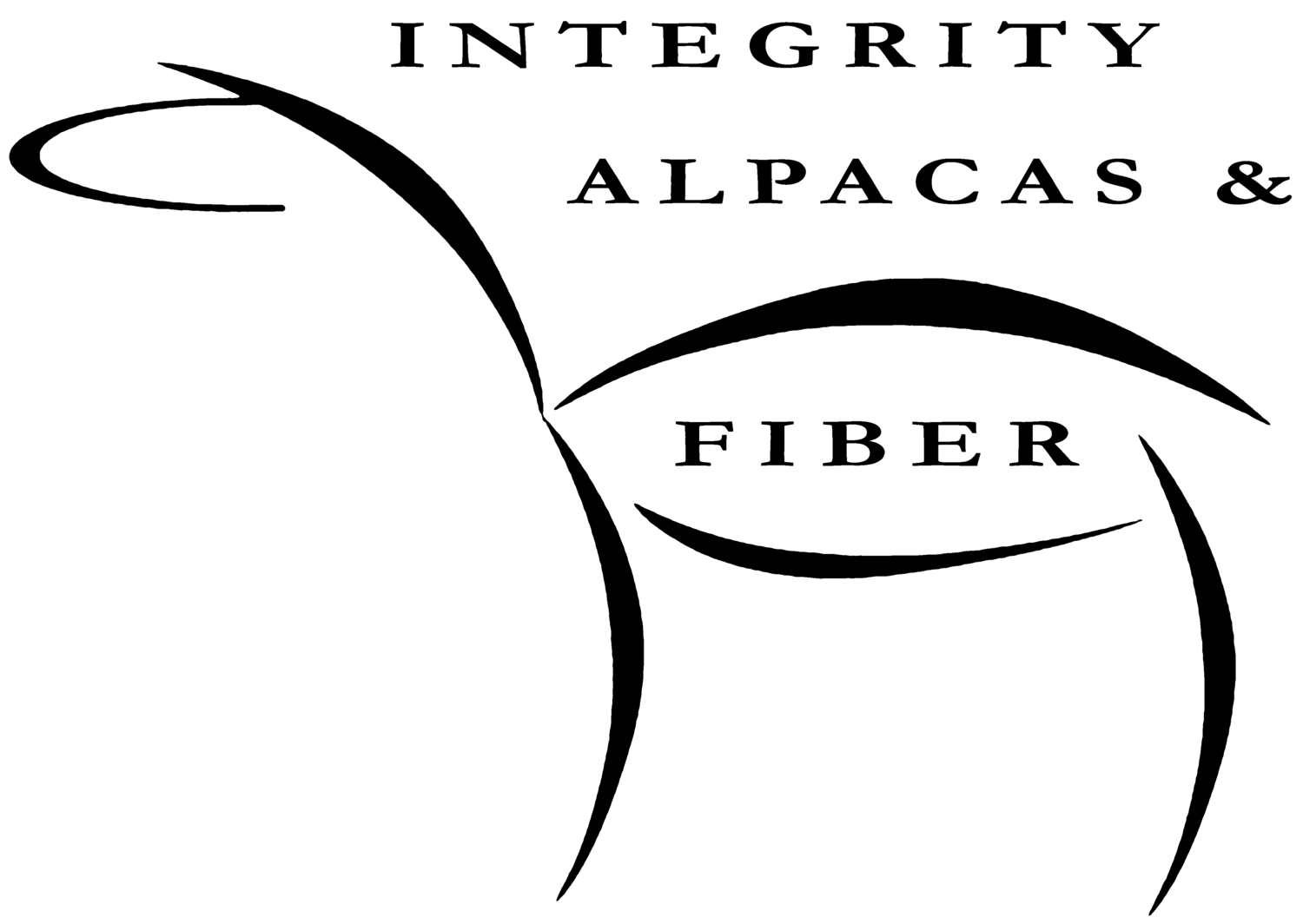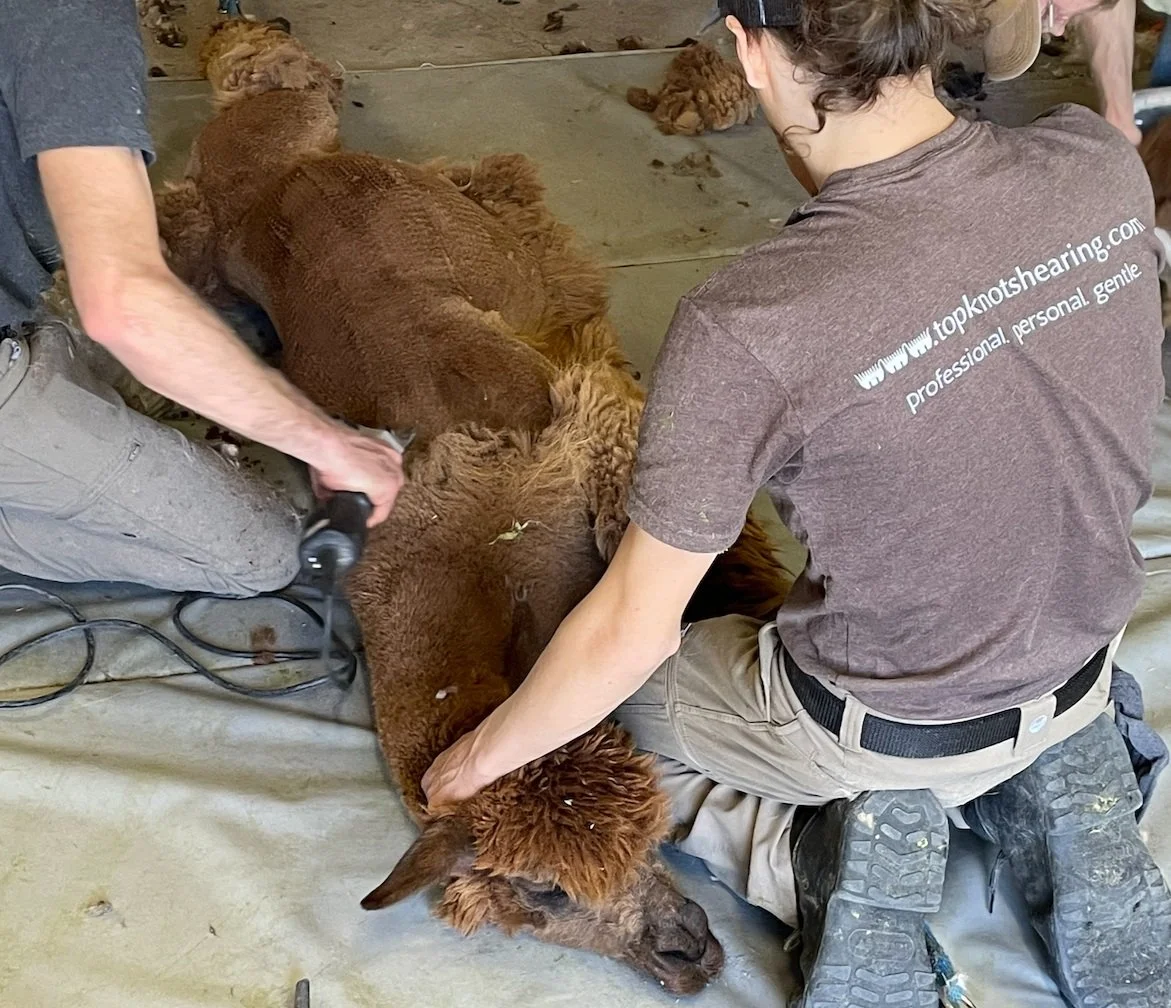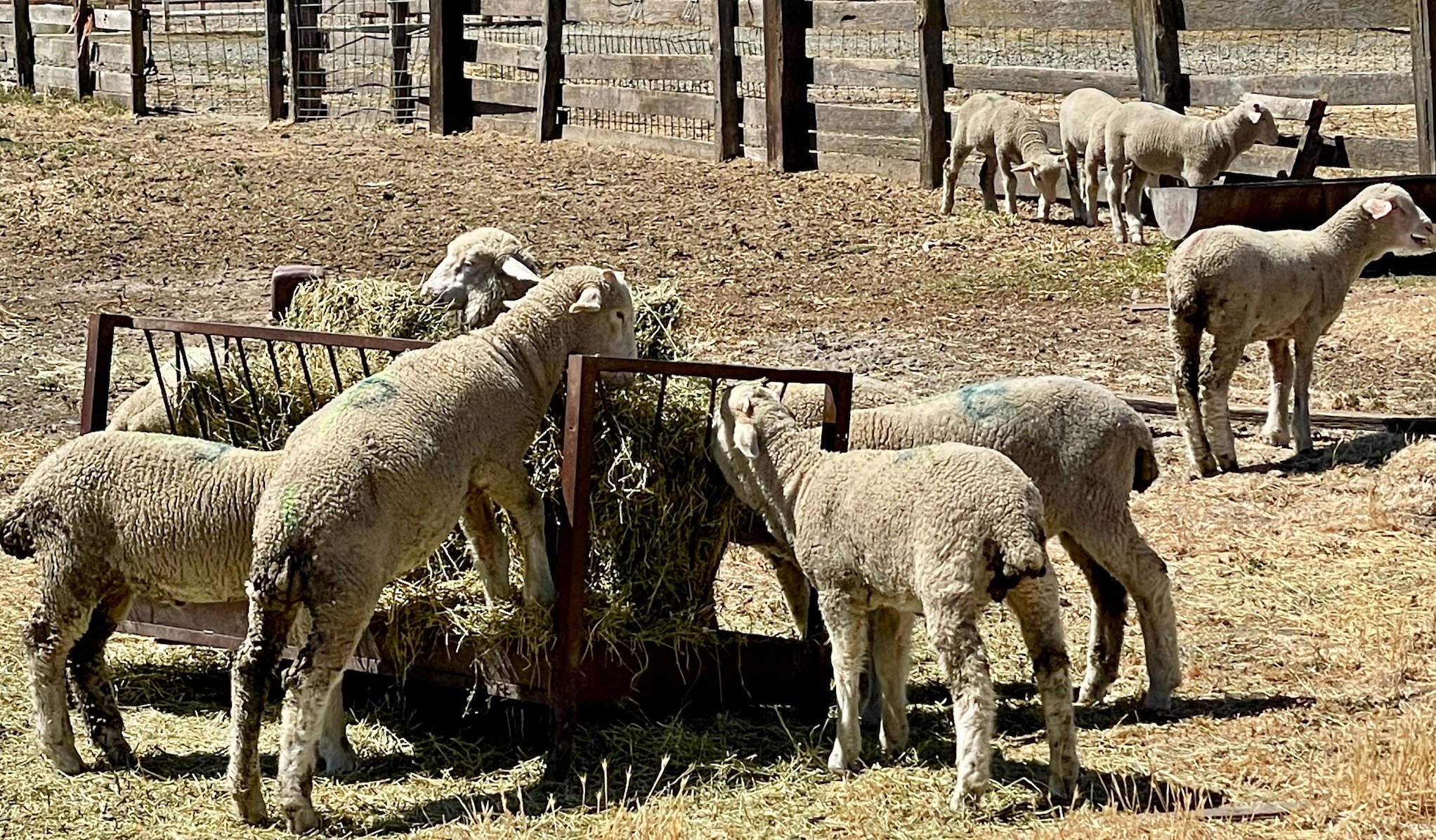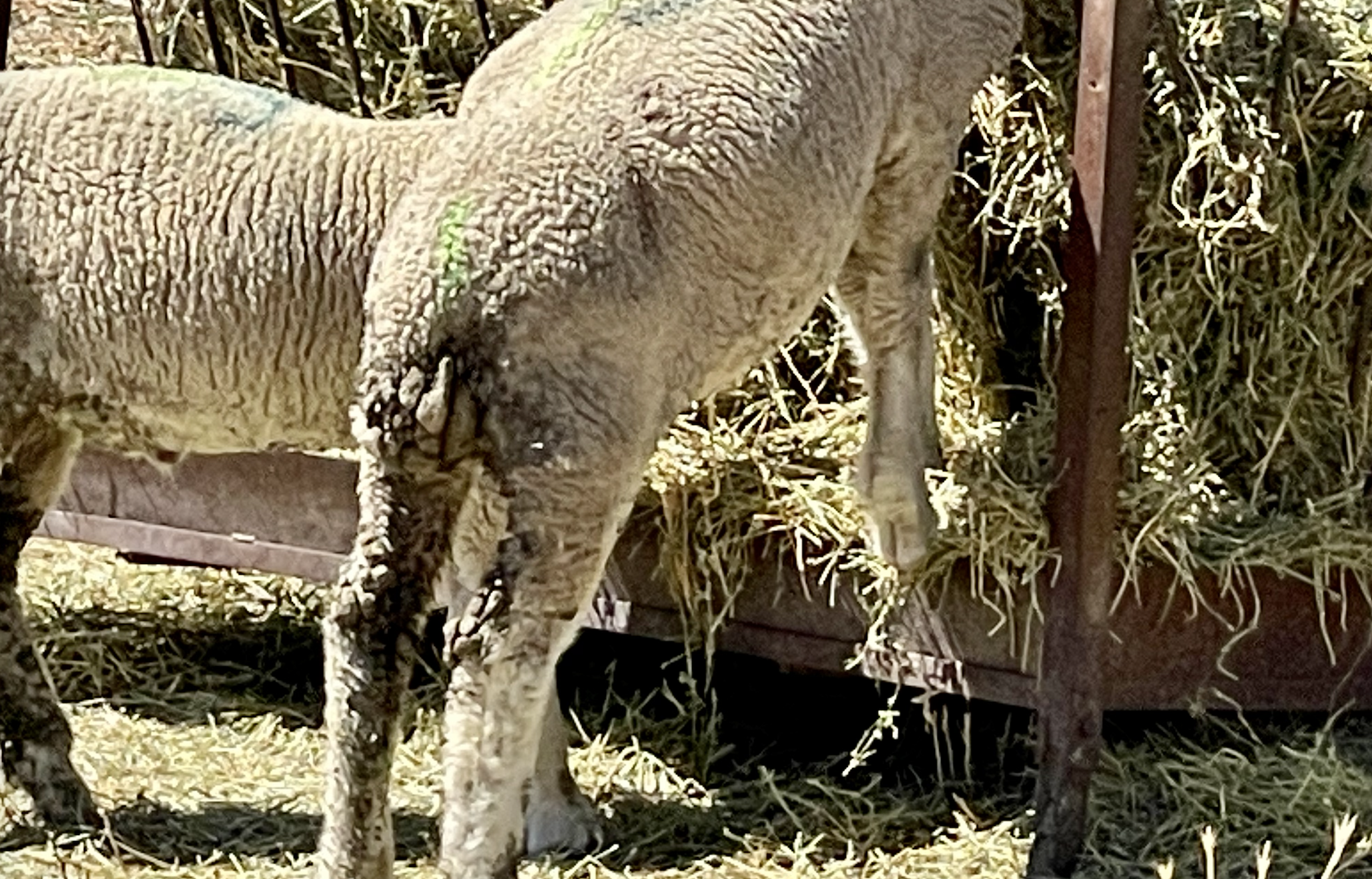What are Waste and Wasted Wool?
Waste wool – Less desirable fiber from the areas on an animal that are not ever intended to be processed.
In this photo, the best fiber from the alpaca has been removed; remaining is waste fiber.
It usually comes from the bellies and back ends of the animal. With alpacas, it might include necks and legs if the fiber is not long enough for processing.
This fiber is typically dirty from poop, called “tags,” or filled with vegetable matter, “VM,” from the ground. Some animals also produce many guard hairs in these regions. Guard hairs are typically straight and coarse making them undesirable in a processed product.
Wasted wool – usable fiber that is not put into production. There are many reasons a grower might not process the wool. Some animals are raised for meat, some for grazing lands. Some growers do not have an outlet to sell end products and quite frankly cannot get enough return in commodity sales to make it worth packing and shipping.
This photo illustrates what may have been usable fiber but is wasted, or, not put into production due to the excessive bits of grass, hay, or seed pods (VM). A producer generating usable fiber needs to protect the fleece from VM through pasture management or coating the animal to keep the fleece clean.
Where does waste and wasted fiber go?
For many, waste and wasted fiber ends up at a landfill. Creative alternatives may include burying it in the soil or spreading it over hillsides for erosion control or mulch. The latter uses are wonderful, but also have limitations. The greatest limitation is that waste fiber is only available to the producers and their circle of motivated friends. We don’t have systems that transform this “waste” into a valuable resource that replenishes our earth—- packaged and accessible to a wider audience.
My vision- Our future- A solution
Through the production of wool pellets, Integrity Alpacas & Fiber seeks to keep waste and wasted wool from our little corner of the world out of the landfill by creating a system to transform the waste into pellets that renourish soil and reduced need for water while growing our food and flowers.







